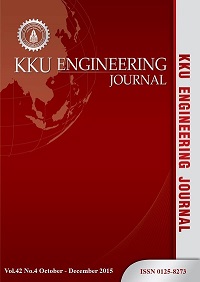Development processes of a master plan for flood protection and mitigation in a community area: A case study of Roi Et province
Main Article Content
Abstract
Development processes of a master plan formulation for flood protection and mitigation consists of the selection process of a targeted area based on risk level, developing a present and future flood inundation map and a flood risk map and identify direction and drainage capacity of the targeted area. Main causes of flooding in the area can be identified leading to designing flood protection and a flood drainage system in both structural and non-structural measures, prior to a public hearing process from stakeholders to finalize the master plan to provide maximum benefits and less negative impact. These processes are applied to Roi Et Province. Based on flood risk criteria, 24 municipalities with high risk are selected. The cause of flooding in the municipality area can be combined in 2 groups, flooding from low efficiency of storm drainage capacity and flooding from overbank flow from the Mun, Chi and Yang Rivers. Structural measures for the first and second group are the improvement of the existing system or changing a new drainage system and the improvement of existing river dikes and levees. It is also possible to design and construct a new one. Constructing a polder system for the community area, requires a budget about 3,338 million baht. To support structural measures, non-structural measures are required, for example, a flood warning system, an emergency response plan during flood disaster.
Article Details
This work is licensed under a Creative Commons Attribution-NonCommercial-NoDerivatives 4.0 International License.



